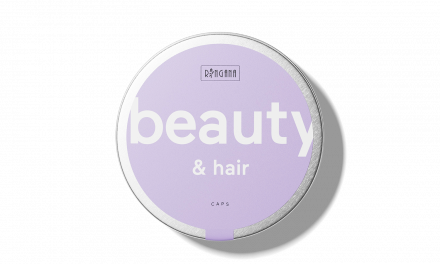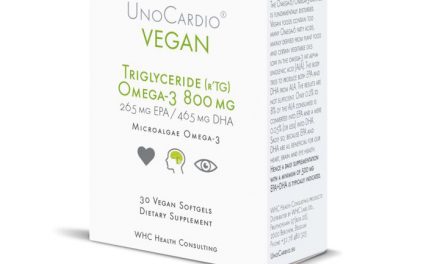[vc_row css_animation=”” row_type=”row” use_row_as_full_screen_section=”no” type=”full_width” angled_section=”no” text_align=”left” background_image_as_pattern=”without_pattern”][vc_column][vc_single_image image=”13606″ img_size=”full” qode_css_animation=””][/vc_column][/vc_row][vc_row css_animation=”” row_type=”row” use_row_as_full_screen_section=”no” type=”full_width” angled_section=”no” text_align=”left” background_image_as_pattern=”without_pattern”][vc_column][vc_empty_space][/vc_column][/vc_row][vc_row css_animation=”” row_type=”row” use_row_as_full_screen_section=”no” type=”full_width” angled_section=”no” text_align=”left” background_image_as_pattern=”without_pattern”][vc_column][vc_column_text]Summer is slowly coming to an end and the long winter nights will soon be here! “SAD is a seasonal depression, in which sufferers feel depressed during the dark winter months, and experience relief during spring and summer. The symptoms can include feeling depressed, oversleeping, craving carbohydrates and sweet foods, and also lethargy. It is interesting that some animals hibernate during the winter and even those who don’t their activity can reduce. So it is thought that maybe SAD is a normal response to the winter months as it was helpful to our ancestors and that nowadays some people may be especially sensitive to the changes in season,” explains the UK’s leading Nutritionist and author of The Natural Health Bible for Women, Dr. Marilyn Glenville (www.marilynglenville.com).
Don’t let the winter months get you down – experts are here to help, with their top mood boosting tips…
[/vc_column_text][/vc_column][/vc_row][vc_row css_animation=”” row_type=”row” use_row_as_full_screen_section=”no” type=”full_width” angled_section=”no” text_align=”left” background_image_as_pattern=”without_pattern”][vc_column][vc_empty_space][/vc_column][/vc_row][vc_row css_animation=”” row_type=”row” use_row_as_full_screen_section=”no” type=”full_width” angled_section=”no” text_align=”left” background_image_as_pattern=”without_pattern”][vc_column width=”1/2″][vc_column_text]1. Switch up your snacks for bananas and dried dates
“Tryptophan is an important amino acid for mood and depression. Your body makes serotonin (the ‘feel good’ brain chemical) from tryptophan. Tryptophan occurs naturally in foods such as dairy products, fish, bananas, dried dates, soya, almonds and peanuts. Tryptophan is converted into serotonin unlike conventional anti-depressant which don’t ‘supply’ serotonin but act as SSRIs, serotonin reuptake inhibitors which keep the level of serotonin high in the brain,” explains Marilyn.
[/vc_column_text][/vc_column][vc_column width=”1/2″][vc_column_text]2. Don’t rely on the sun for Vitamin D because you could be waiting a while!
“You may be more affected by SAD because of a lack of vitamin D, as it is thought of as the ‘sunshine vitamin’. Vitamin D receptors are present in your central nervous system and vitamin D can affect neurotransmitters like serotonin, which are linked to depression.”
If you can, get a liquid vitamin D3 and drop it under your tongue. It will go into the blood vessels under your tongue so it is absorbed quickly, rather than having to be digested if you take a capsule.[/vc_column_text][/vc_column][/vc_row][vc_row css_animation=”” row_type=”row” use_row_as_full_screen_section=”no” type=”full_width” angled_section=”no” text_align=”left” background_image_as_pattern=”without_pattern”][vc_column][vc_empty_space][/vc_column][/vc_row][vc_row css_animation=”” row_type=”row” use_row_as_full_screen_section=”no” type=”full_width” angled_section=”no” text_align=”left” background_image_as_pattern=”without_pattern”][vc_column][vc_single_image image=”13545″ img_size=”full” add_caption=”yes” qode_css_animation=””][/vc_column][/vc_row][vc_row css_animation=”” row_type=”row” use_row_as_full_screen_section=”no” type=”full_width” angled_section=”no” text_align=”left” background_image_as_pattern=”without_pattern”][vc_column][vc_empty_space][/vc_column][/vc_row][vc_row css_animation=”” row_type=”row” use_row_as_full_screen_section=”no” type=”full_width” angled_section=”no” text_align=”left” background_image_as_pattern=”without_pattern”][vc_column width=”1/2″][vc_column_text]3. Laugh all year long
Having a laugh is one of the best remedies for stress and low mood – it triggers healthy changes in our body. “Many studies show that laughter boosts our energy, decreases stress hormones, improves immunity and diminishes pain. But what’s very important for anyone, who is stressed or feeling down, is that laughter triggers the release of endorphins, the natural feel-good chemicals that make us happier and relaxed,” explains Marilyn.[/vc_column_text][/vc_column][vc_column width=”1/2″][vc_column_text]4. Cheer up your mind through your gut
“We’re learning more about the importance of the ‘friendly’ bacteria and other microbes that live in our gut. Our gut is often referred to as the body’s second brain as it is teaming with billions of bacteria that help influence immunity, mood, digestion and even brainpower,” explains Nutritionist and Fitness Instructor Cassandra Barns.
The brand-new Sense* for Gut Health is here to help not only your gut, but also your mood! This natural food supplement provides expertly targeted nutrients, supporting gut membranes, digestive enzymes and healthy stomach acids by replacing the harmful bacteria with nutrients that help to heal and maintain a healthy gut. The product is available in a capsule form for convenience (£14.99, www.boots.com), or in a powder form (£21.99, www.boots.com), which can be added to your favourite smoothies, juices or stirred into food.
[/vc_column_text][/vc_column][/vc_row][vc_row css_animation=”” row_type=”row” use_row_as_full_screen_section=”no” type=”full_width” angled_section=”no” text_align=”left” background_image_as_pattern=”without_pattern”][vc_column][vc_empty_space][/vc_column][/vc_row][vc_row css_animation=”” row_type=”row” use_row_as_full_screen_section=”no” type=”full_width” angled_section=”no” text_align=”left” background_image_as_pattern=”without_pattern”][vc_column][vc_single_image image=”13546″ img_size=”full” qode_css_animation=””][/vc_column][/vc_row][vc_row css_animation=”” row_type=”row” use_row_as_full_screen_section=”no” type=”full_width” angled_section=”no” text_align=”left” background_image_as_pattern=”without_pattern”][vc_column][vc_empty_space][/vc_column][/vc_row][vc_row css_animation=”” row_type=”row” use_row_as_full_screen_section=”no” type=”full_width” angled_section=”no” text_align=”left” background_image_as_pattern=”without_pattern”][vc_column width=”1/2″][vc_column_text]5. Bring the light to you
“If you feel especially down on dark mornings, consider using a special light lamp alarm clock. The lamp gradually turns itself on (and gets brighter and brighter) to mimic natural dawn sunrise, to wake you up slowly before your alarm goes off. Research has shown people feel more positive and find it easier to get out of bed in the darker months after using this kind of device,” says Nutritionist, Cassandra Barns.[/vc_column_text][/vc_column][vc_column width=”1/2″][vc_column_text]
6. Everyone is going hemp crazy and rightly so
Hemp, the sought after natural ingredient, continues to hit headlines thanks to its highly nutritious health benefits. Hemp contains phytocannabinoids, “Phytocannabinoids are natural substances found in cannabis sativa plants. When we absorb them, they interact with our nervous system, brain and immune system. They do this by mimicking – or helping to increase – the activity of natural chemicals produced in our own body known as endocannabinoids. Endocannabinoids have effects on many systems and processes in our body, including digestion and appetite, mood, stress response, sensations of pleasure and pain, our immune system and reproduction. So, phytocannabinoids from cannabis sativa are thought to have beneficial effects in these areas.”[/vc_column_text][/vc_column][/vc_row][vc_row css_animation=”” row_type=”row” use_row_as_full_screen_section=”no” type=”full_width” angled_section=”no” text_align=”left” background_image_as_pattern=”without_pattern”][vc_column][vc_empty_space][/vc_column][/vc_row][vc_row css_animation=”” row_type=”row” use_row_as_full_screen_section=”no” type=”full_width” angled_section=”no” text_align=”left” background_image_as_pattern=”without_pattern”][vc_column][vc_single_image image=”13548″ img_size=”full” qode_css_animation=””][/vc_column][/vc_row][vc_row css_animation=”” row_type=”row” use_row_as_full_screen_section=”no” type=”full_width” angled_section=”no” text_align=”left” background_image_as_pattern=”without_pattern”][vc_column][vc_empty_space][/vc_column][/vc_row][vc_row css_animation=”” row_type=”row” use_row_as_full_screen_section=”no” type=”full_width” angled_section=”no” text_align=”left” background_image_as_pattern=”without_pattern”][vc_column][vc_column_text]7. Don’t let multiple things get you down
Diabetes is much more than a condition that affects blood sugar. It can have an impact on nearly every body system, including a person’s mood. Winter is bad enough – don’t let multiple things get you down on top of the chilly conditions.[/vc_column_text][/vc_column][/vc_row]





